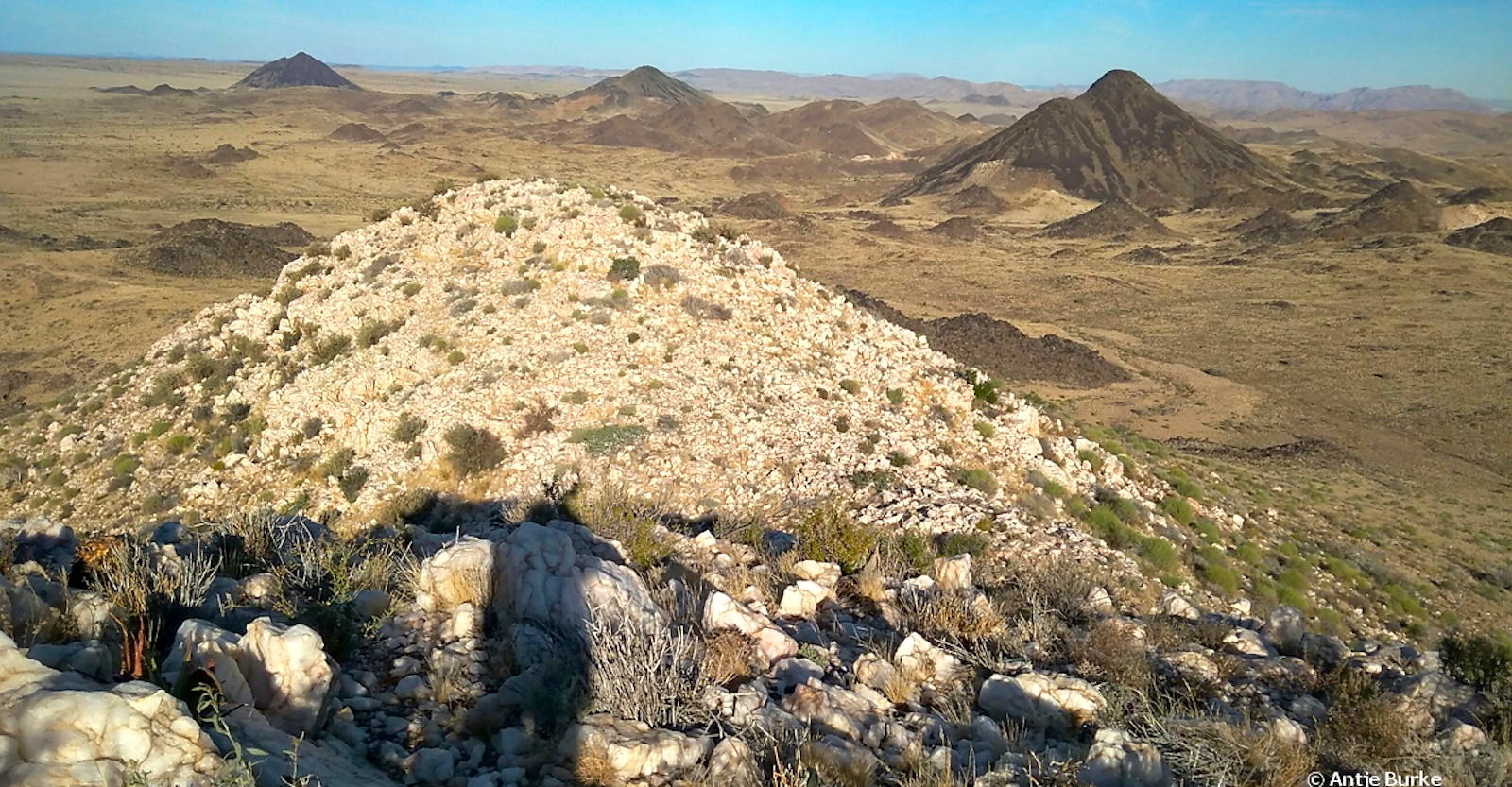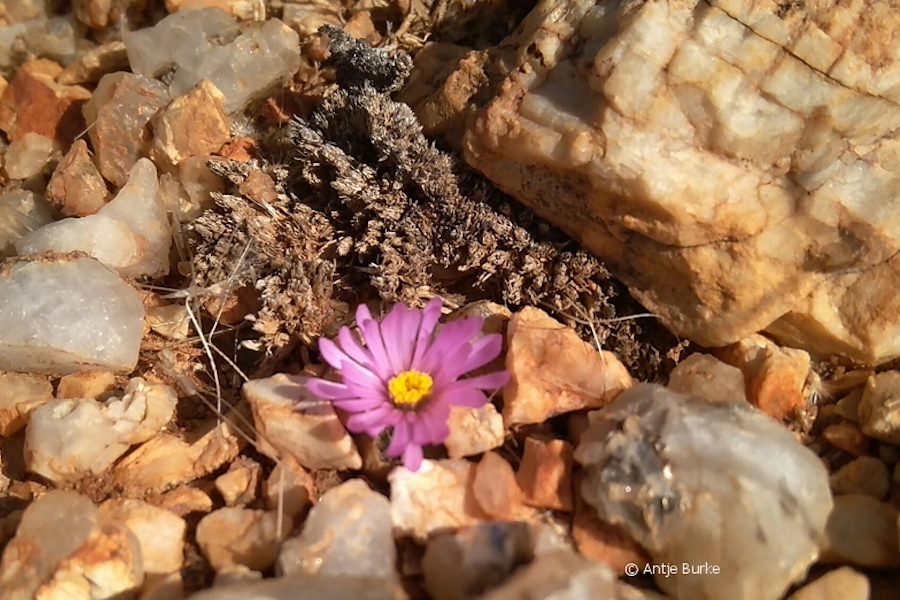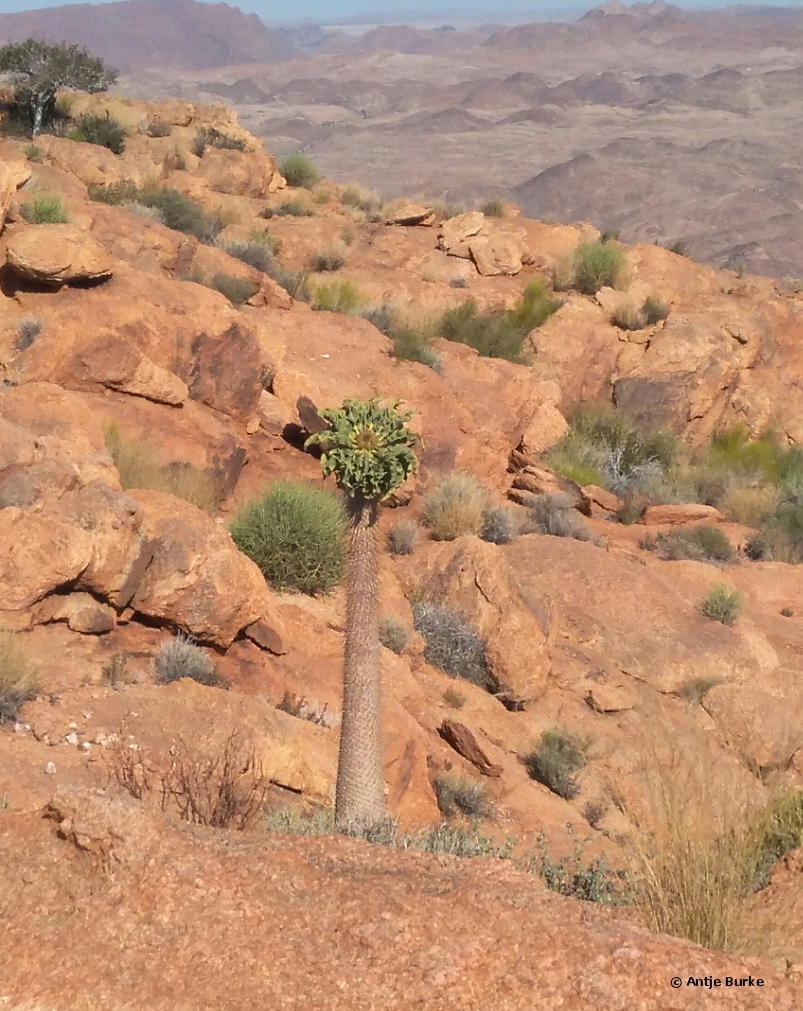

Investigating a little-known biodiversity hotspot
14th December 2022
Did you know that Namibia and South Africa co-host the world's only arid biodiversity hotspot? Known as the Succulent Karoo Biodiversity Hotspot, plant lovers most often associate it with the Northern Cape in South Africa. Few people, even among Namibians, realise that this hotspot extends into southern Namibia just north of the Orange River.
What makes this remote part of Namibia even more interesting is that it is where the Succulent Karoo and Nama Karoo meet, creating a transitional zone between the two biomes (major ecological units). This zone supports species that are characteristic of each biome along with many unique species that occur nowhere else on the planet (known as endemics).
The mountainous stretch of land south of the tiny town of Warmbad in Namibia is known among scientists as the 'Gariep Centre of Endemism' in recognition of its unique biodiversity. This area is popular among local succulent plant lovers, notably a schoolteacher from Warmbad, Margarete Friedrich, who was memorialised in the scientific name of a succulent that thrives in this area.
I was therefore thrilled to receive an invitation to do a plant survey in a conservation area located in this centre of endemism, as I expected to find unusual plants and high plant diversity. What I found on the ground during my survey in the late growing season (May-June 2022) surpassed my expectations.


The Orange River-Karoo Conservation Area (ORKCA) is a non-profit umbrella reserve that covers several private farms to form one vast conservation area. Located 100 km south of Grünau, ORKCA stretches along 55 km of the eastern bank of the Orange River. This rugged mountain landscape with many different habitats supports well over 200 plant species, including many succulents that occur in very few other locations.
Mountains known as the Skimmelsberge range cover a large part of the reserve; this range is part of the larger Huns and Namuskluft Mountains that extend to the Richtersveld in the west. Rocks of the very old (1800-1000 million years) Namaqua Metamorphic Complex underlie most of the conservation area, which are covered by Kalahari sand in some places.
An unexpected highlight from my field survey was the large, healthy population of the 'halfmens' (half-person) found in several parts of the reserve. This striking large succulent has an oddly human-like growth form – an upright main stem with leaves perched on top of its stem and main branches like an exotic hairstyle. The halfmens plants here are at the north-eastern-most boundary of their distribution and are thankfully well protected in this conservation area. In other parts of their range they are declining due to a combination of unscrupulous, illegal collecting and climate change.
Another feature of this area are rare 'stone plants' that are treasured by succulent lovers worldwide. These tiny fleshy plants typically grow among quartz stones and are easily overlooked by casual observers. Yet they produce beautiful little flowers after the rains and are real gems of the desert. I saw several specimens representing several different genera (groups of closely related species) of stone plants during my survey.

From a conservation point of view, there are plants besides these special succulents that are worth mentioning. I found large stands of the Karoo schotia growing in the larger, dry riverbeds – these legally protected trees are rare in Namibia. From my survey, it seems that ORKCA has some of the largest populations of these trees in the country.
All of this remarkable plant diversity is likely mirrored in a diversity of animal species such as insects and arthropods, which have yet to be surveyed in the area. A six-day reptile survey led by Francois Theart on part of the ORKCA area in 2018 recorded 26 species, and the area is likely to support many desert-adapted small mammals. Not to mention larger, iconic desert-adapted mammal species populating the private nature reserves that form part of ORKCA.
This area certainly deserves protection and judicious management for conservation. Two of the properties in my survey – Sandfontein Game Reserve and Oana Nature Reserve – already engage in low-impact forms of tourism. Other properties that are part of ORKCA have also prioritised conservation-oriented land uses, and there are plans in the pipeline to link ORKCA with properties in South Africa to create a vast conservation landscape.
Why are biodiversity hotspots so important for conservation? Diverse habitats support many plant and animal species, which represent enormous genetic diversity. These species interact with each other in numerous ways, which in turn increases the ability of an ecosystem to recover from human-caused disturbances, like overgrazing or vegetation clearing associated with mining and infrastructure developments.
Diverse ecosystems provide more ecosystem services than monoculture systems like crop fields. These services range from capturing, storing and releasing water and nutrients that are key to the survival of plants, animals and humans. Diversity leads to resilience, which is the ability of an ecosystem to adapt to major changes. For example, the mountains in this conservation area create niches for plants that may perish in the lowlands if temperatures increase to the extent predicted in climate change models.
Protecting plant diversity is thus the cornerstone to protecting ecosystems and the services they provide, both now and in the uncertain future we face. This particular ecosystem in southern Namibia is in good hands, and I know that it will continue to delight visitors and fascinate scientists who understand the value of this ecological diamond in the rough.
If you enjoyed this page, then you might also like:



For articles on similar topics, please click one of the following options:
We use cookies to monitor site usage and to help improve it. See our Privacy Policy for details. By continuing to use the site, you acknowledge acceptance of our policy.